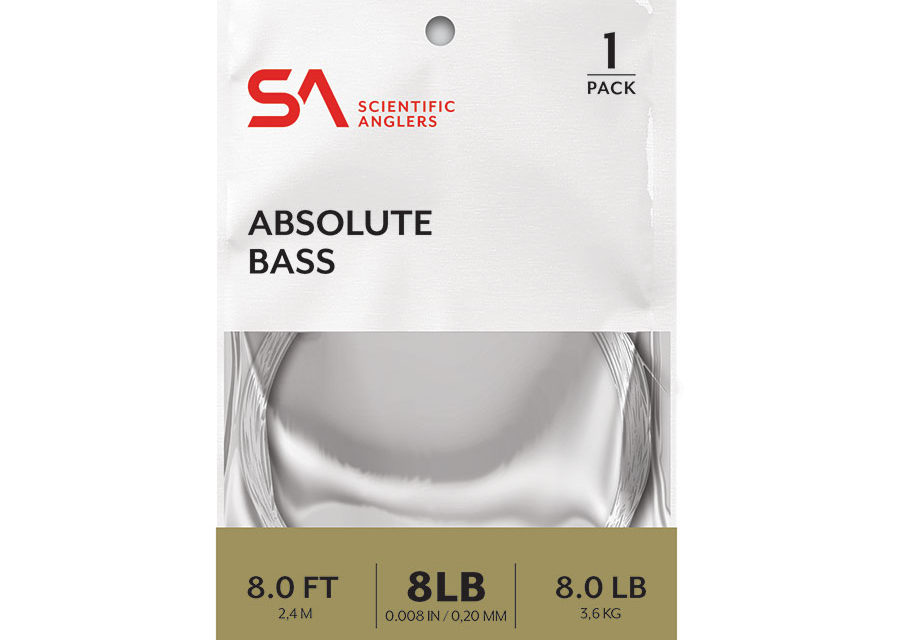Top Water Tactics for Smallmouth February 16, 2015 – Posted in: Basics
Capt. Leo Wright
Leo Wright Guide Service, LLC
Smallmouth fishing on the fly may be this fisherman’s favorite challenge. Don’t get me wrong, I love all species: the famed steelhead of West Michigan’s waters, bonefish on the flats of Belize, or striper in my native New England. If it’s fishing, I’m in. It’s written everywhere that smallmouth are about the hardest fighting fish, pound for pound. Having chased many species on a multitude of waterways, I agree wholeheartedly.
Smallmouth are opportunistic feeders. They utilize chameleon-like trickery, coupling camouflage with excellent daytime vision to pounce upon their prey. A sensitive lateral line provides keen detective abilities. These attributes require anglers to adopt a few special tactics.
There are a number of styles of fishing (especially effective in larger river systems) that take advantage of the ambush impulse of the smallmouth bass. Focus here will be on the popular favorite during summer’s peak heat – fishing top water flies. Nothing’s half as exciting as watching the explosive take by your quarry at the water’s surface. I am a particular fan of deer hair bass flies. Within the deer hair family of flies, I fish many variations of Larry Dahlberg’s diver. With regard to color, the olives, yellows, grays and natural tones are killer under normal fishing conditions. In stained water conditions, bright orange and yellow bodies have proven successful. For the tails, more traditional style saddle hackles give a nice kicking action when tied properly. Rabbit strip tails are also tremendously effective as they too can provide tantalizing action the bass just can’t seem to resist. Often you hear larger flies are used as they can “move lots of water”. In truth, the response to the fly is probably due more to the silhouette the fly imparts than the amount of water disturbed. The fish, as a species, is so aggressive, you will occasionally take smaller fish on these larger bugs, but many larger fish taken on the surface succumb to these patterns. That being said, it’s time to offer up a contradiction.
Fishing many different smallmouth waters has taught me that while big flies can and do work for trophy fish, many can be caught on smaller popping bugs and sliders imitating dragonflies, cicadas etc. Structure comes in many forms, don’t ignore overhanging shade trees and branches along the river’s edge, not generally thought of as structure for fish. Smallmouth, however, do treat it as such. Make long casts in these areas landing your fly with a solid predator plop, then be sure to fish them slowly: little twitches, rest, wait, wait some more, twitch again, gently moving the bug. No gurgle plops! Too many anglers overfish surface patterns for smallmouth, thinking that quick, repeated popping of the bug will work. More often than not, employing the quick popping style spooks fish away from a strike.
Of paramount importance is the matching of proper fly line to the fishing situation. Casting large hair bugs with a six-weight can be done, leading more to frustration and fatigue than to a nice fish hook-up. Six and seven-weights are fine when going with cicada or damselfly imitators, but don’t fear bumping up to an eight or nine weight; these fish can handle it. For the larger flies, you can’t beat Mastery’s Sharkskin Magnum Tapers. They allow accurate, long distance placement of stout, wind resistant flies. In low, clear water (especially if pressured) try Scientific Anglers’ Supra lines. I use the buckskin color for a stealthy approach. In murkier conditions, flies with rattles integrated into the body provide just enough additional vibration to yield good results.
Trout fishermen going after feisty smallies will need to retrain themselves a bit. Set that hook hard! The bass possess extremely tough mouth membranes and a simple raising of the rod will not do. If you’ve seen Jimmy Houston use a baitcast rod to set the hook on a bass, you understand what’s necessary to bring these fish to hand. As with any fishing, keep those hooks super sharp.
Finally, leader construction is very important. For the larger hair bugs, be sure to use heavier butt sections to turn the flies over properly. Remember, you are fishing surface flies, and nylon type leaders float much better than fluorocarbon. Though you may like the invisible properties of fluorocarbon, they may tend to sink your fly, preventing proper presentation. Loop knots are useful with surface patterns; try them out, and add to your ability to deliver a more natural presentation. Don’t be surprised when you nail the occasional Northern Pike while using these methods!
When fishing a large river, it quickly becomes obvious if the fish are not on the bite. You may be throwing a surface popper and nothing will come up to take a look. Or you may be casting a suspending fly and the fish may be take a peek, but refuse it in the end. As with any type of fishing one must be ready to adjust. Conditions are dynamic. Factors such as weather, river flows, temperature, and even changes in structure can make any day’s fishing challenging. Clever anglers are always prepared to make adjustments, especially when chasing clever fish.

